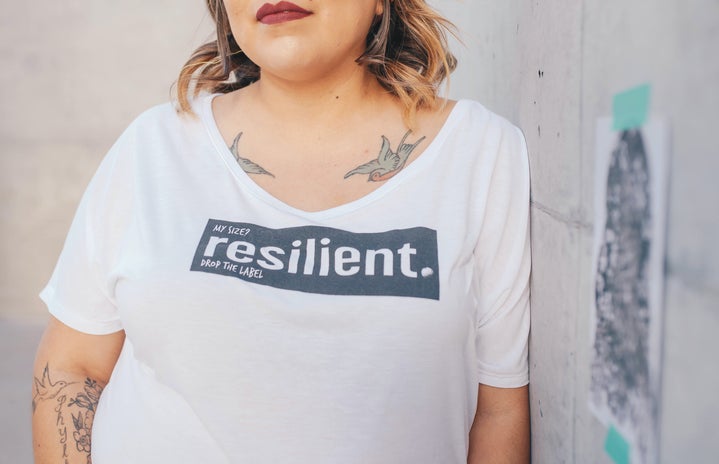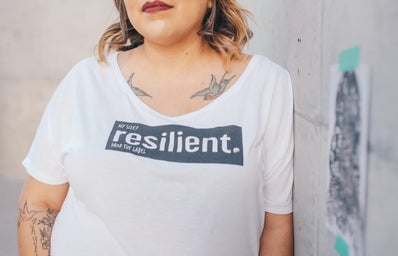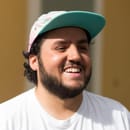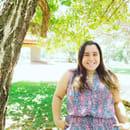With the internet being so easy to access, it has become easier for independent artists to find an audience and let their work be known. As a result, a variety of movements, collectives and scenes have found a way to pave their path. The independent art scene in Puerto Rico is no different. Recently, a variety of artists from a variety of disciplines have found platforms that have made it easier for them to share their work. In addition, small businesses such as Electroshock in Santurce and Rio Piedras, bars like Off The Wall in Mayagüez, and libraries like La Casita Books and Gifts in Aguadilla, have provided up-and-coming artists a space for them to display their talents. “Puerto Rican Women Killing It in the Independent Art Scene” are interviews which provide a glimpse at a few of the women who are making their way in said movement. Though the artists were asked similar questions, some were asked queries focused specifically on their work.
Zuleira Soto-Román is an interdisciplinary artist who paints “with light and sculpt[s] with movement.” She “move[s] from performer to actor to designer to director to technician.” In her own words, “interests lie in ‘practice as research’, site-specific and devised work. I currently work in collaboration with fellow artists to awaken alternate theatre and performance spaces, as well as produce, coordinate and promote art residencies and trans-disciplinary events throughout the island. I have trained and worked professionally in places like Barcelona, Berguedà, Croatia, Morelia, Puebla, DF México, Dominican Republic, Baltimore, Virginia, New York, and Puerto Rico. Member of Vueltabajo Collective and collaborator with ENSITU DANZA, DisidentAs, and Matotumba. I developed experience working towards re-habilitating spaces (public and private) meant for laboratory and residency. I’ve gained technical experience working productions throughout different stages and sets such as CBA Luis A. Ferré, Yagüez Theatre, Cafè-Teatre Llantiol, Casa de Cultura RUTH Hernández, Magatzem Voltaire, Casa Cruz de la Luna San Germán, Taller Libertá, among others.” The following interview was conducted online.
(Soto-Román beside one of her pieces)
I’ve noticed you have delved into theater and poetry, how do you manage to balance and/or mix both worlds?
Poetry and theatre entwine, both worlds coexist already. I only use both as mediums to try to communicate more efficiently.
How did you develop your style and how has it evolved through the years?
I have a lot of teachers. I’m thankful to have been in contact with so many wonderful people while working in theatre. I work from the stain (la mancha). I don’t cover it, I play with it, grow from it. The more I work, the more I become aware of what I want in a process. I’m not focused in creating a product, my goal is ‘practice as research’ and process is the most important thing. Vueltabajo has been my main platform. It has helped me develop a lot of work and all different (movement, physical theatre, object manipulation, performance art, visual art, photography, etc.)
(Soto-Román performing)
How did Vueltabajo Teatro come about and what is your role in this collective?
An exquisite corpse is a collaborative drawing approach first used by surrealist artists to create bizarre and intuitive drawings, and now it is also a method by which a collection of words or images is collectively assembled. That is how the name came to be. The name Vueltabajo was constructed by words pulled out randomly out of a cup in Poble Sec, Barcelona, Catalunya. Eury G. Orsini was also there pulling out those words! He is one of the reasons I work with Vueltabajo: I believe in his work, I grow with his work, I love to Imagine with him. My role in this collective is TRANS and constantly changing, I’ve been active since 2011 (even though we’ve been working together way before this concept). Our work is SITE-SPECIFIC and every project is dealt with depending its context.
How did Taller Libertá come about and what is your role there?
When Vueltabajo was stationed in Barcelona we opened a space called MAGATZEM TEATRE (“warehouse theatre” in Catalán). This experience gave the collective a lot of information, of what we want and don’t want from a space. Also, because it was being used in so many ways, it gave us time to document what are the common needs of a workspace designed to accommodate multidisciplinary artists. Vueltabajo moved to Puerto Rico in 2013 and since then, we have been working to activate different spaces throughout the island, but stationed in Mayagüez. Our work is ‘SITE-SPECIFIC’ and almost every project developed was a stepping stone towards Taller Libertá. “Gestión Corporal Mayagüezana,” a name given to honor the teachings and the work being done by Myrna Renaud (director/creator of ‘ENSITU DANZA’, teacher/mentor/collaborator with Vueltabajo), developed various concepts to intervene with the public space and reclaim them as safe spaces for artists to present their work. Together with artists from all over the island, Vueltabajo developed “Circo de la Plaza,” “Paseo Polímata,” “Teatro de la CoMMedia,” among other concepts. Taller Libertá is only part of this journey, part of these investigations and collaborations are made in public and private spaces. Taller Libertá is a workspace for independent and trans-disciplinary artists. I wear different hats, but my investigation in this space, Taller Libertá, is focused on designing an environment that is alive and trans. A safe space to work and develop projects, to sit and think, and create. An open space, open doors, so people from the community have access to different art forms in their everyday routines. A space outside the capital that nourishes creativity and embraces the high quality work that is being done by local artists already. Artists don’t have space, their houses are full, their garages are their workshops. We want a space that can generate and produce work for these independent artists.
(Soto-Román performing)
What do you think about the current state of theater and poetry in Puerto Rico?
There’s a lot of people working. Good work, outside the main stages, outside the main cities. A lot of highly trained artists, artists that are constantly producing and collaborating, locally and internationally. There needs to be more access. People need to see art, to want art. They need to know why art is important, and that is our job. We need to create safer and more welcoming environments so people want to join and participate. We need to start paying artists so we don’t depend on tickets or entrance fees. And audiences need to understand and value the work being done. You can’t really sell art, its value is much more than a number. You can support the work so it gets done.
What do you think about the current state of the independent scene in Puerto Rico?
It is alive and it is where the work is being done. “Autogestión” doesn’t have a literal translation, so I will use it in Spanish. Autogestión is how independent projects are being developed throughout the island. People are getting together to work towards healthier relationships, healthier food and healthier and more inclusive environments. Art is a community, and the people are working towards achieving healthier and more inclusive platforms. They are working independently from companies or organizations that attempt to put at risk these goals while trying to make a profit out of people.
(Soto-Román performing alongside Eury Orsini)
Is there any other form of art you wish to pursue? If so, what field and why?
I work, and work, and then some more. The form will be a response, context specific: space and concept.
If a young girl came up to you and said she wanted to be an artist, what would be your advice for her?
Be curious. Be loud. Question everything. Speak YOUR truth. Always say we, not they or them. Health is everything, protect your health at all costs.
(Soto-Román performing)
What do you seek to achieve with theater and poetry?
Imagine. Create new language. Document my reality. Heal. Provoke. Engage in critical thinking. Question everything. Deconstruct. Denounce. Design space. Build bridges. Create more inclusive worlds. Make you laugh. Make you feel uncomfortable. Make you wanna move. Play.
What is your biggest goal right now?
“Ser y estar.” Be present and in my body.
Find Vueltabajo Sitio, Circo de la Plaza and Taller Libertá on Facebook
*All the pictures in this interview were found on the Facebook’s of Vueltabajo Sitio, Circo de la Plaza and Taller Libertá.



